How to Troubleshoot Audio and Video on Windows
This article describes how to configure the audio and video on your Windows device to be Coviu-ready.
Last Updated: April 2024
Note:
- The screenshots in this article are from a Windows device running Windows 11 Home.
- You can run Coviu's Pre-call Test to check the compatibility of your device and connection for a Coviu video call.
On this page:
- Web browser: Site settings
- Windows: Sound settings
- Windows: Sound output
- Windows: Microphone privacy settings
- Windows: Camera privacy settings
- Getting back to your Coviu video calls
- More support options
Web browser: Site settings
For Coviu to work on your web browser, you must allow it to access your audio and video sources when prompted. You can check if Coviu has been granted permission to access your camera, microphone and speaker by checking your web browser's Site settings to ensure that permission is set to Allow for Camera, Microphone and Sound.
This can be easily seen by clicking the slider icon on the top left corner of the screen. Clicking here lists all of the site-related information.
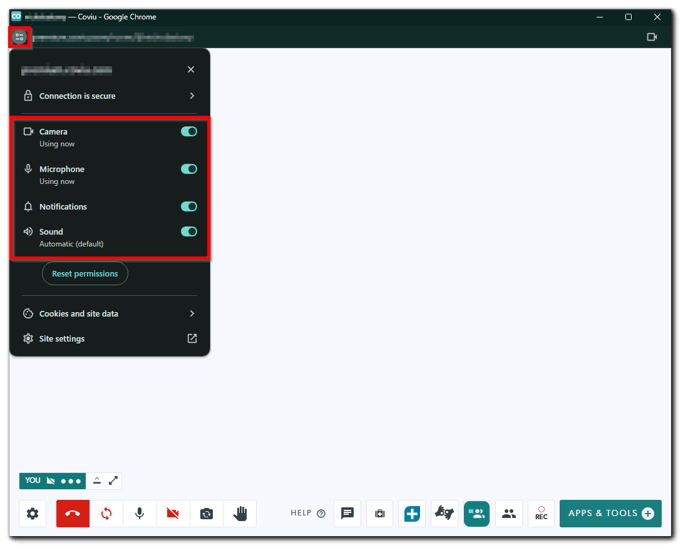
Windows: Sound settings
Ensure your Windows device audio is not muted or set at an inaudible volume. You can quickly access your Windows Sound settings by typing the same in the Windows search bar.
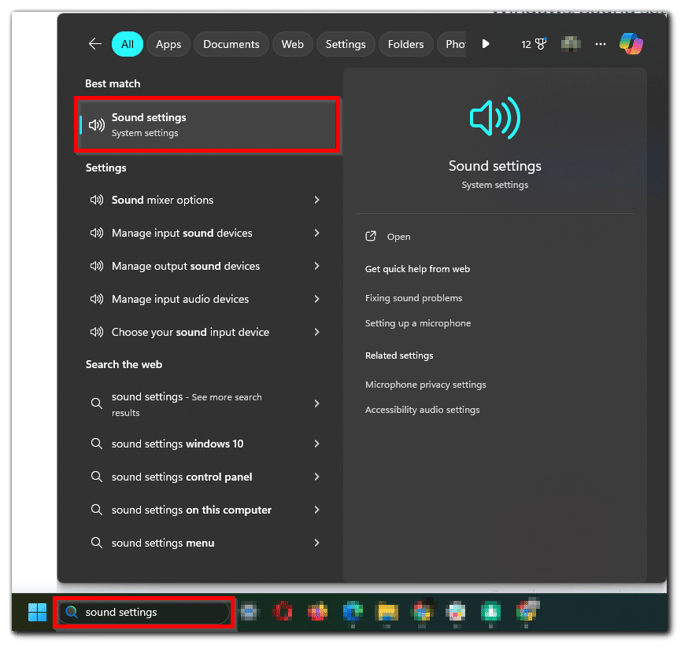
Once there, ensure your Windows device is set up to use the correct Output and Input devices.
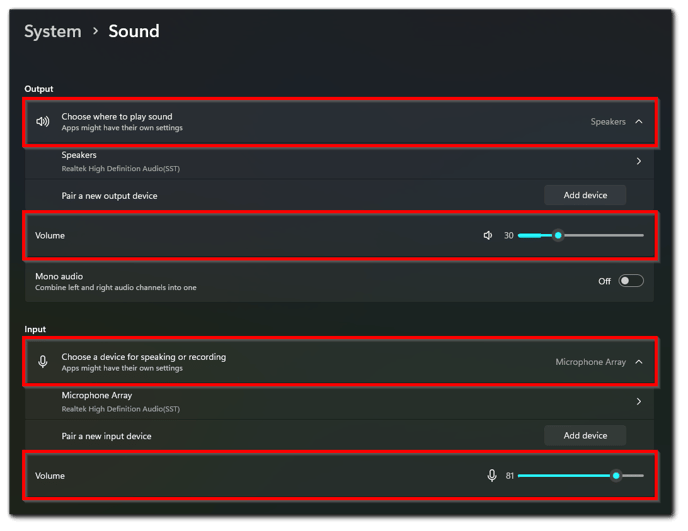
Note:
- Under the Output section, you can check if your selected speakers have been set to an audible volume and are unmuted.
- Under the Input section, you can check if your selected microphone has been set to an audible volume and is picking up sound.
- If your microphone, speakers or headphones are not listed, please ensure they are still powered and connected to your device. You can also try disconnecting and reconnecting the microphone, speakers or headphones to your Windows device. Restarting your Windows device is also recommended.
- If problems persist, please check in with your local IT provider or return the device if faulty.
Windows: Sound output
You can also quickly access and switch between multiple speaker sources by heading to the Sound output settings. You may find that you have previously chosen to use your headphones as the output source on your Windows device, but you have chosen the built-in speakers instead as the output source on Coviu. You need to ensure that the same output source is selected for your Windows device and Coviu.
- Click the speaker icon on the bottom right corner of your Windows taskbar.
- Click the slider icon to select a sound output.
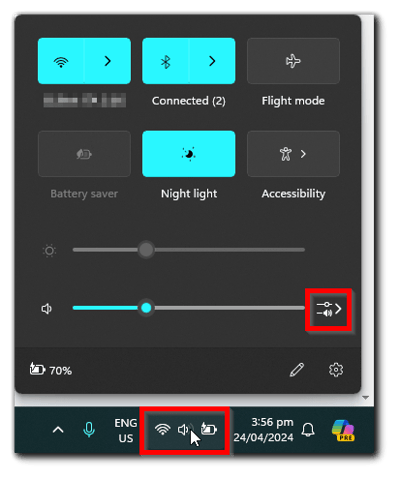
- You can also adjust the output volume from here.
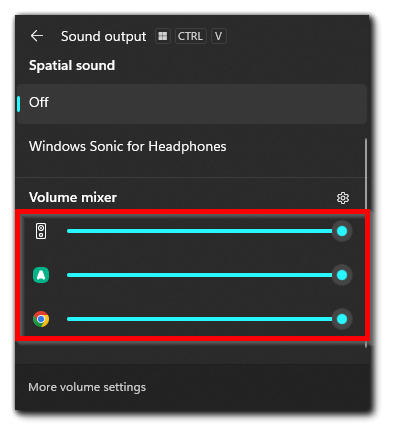
Windows: Microphone privacy settings
Check your Windows Microphone privacy settings to confirm that your web browser is given access to your microphone. You can quickly access your Windows Microphone privacy settings by typing the same in the Windows search bar.
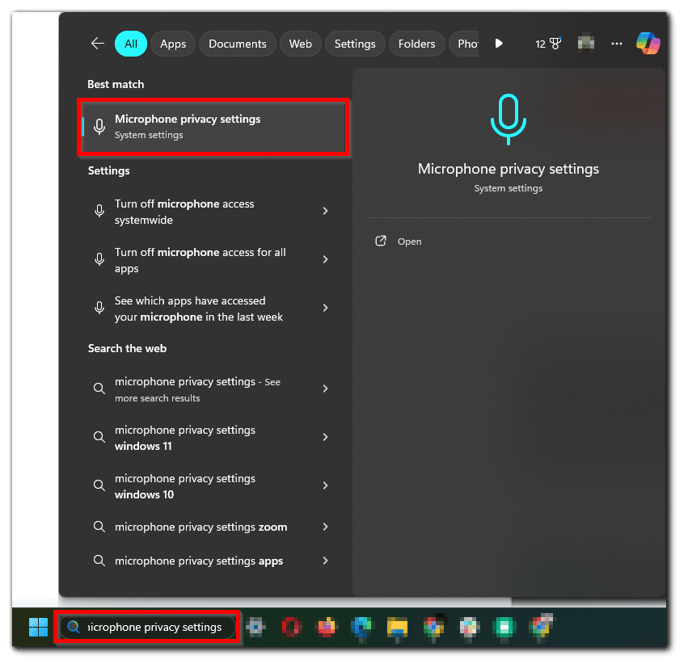
Once there, ensure the following is enabled:
- Microphone access
- Let apps access your microphone
- Let desktop apps access your microphone (your web browser should be listed underneath)

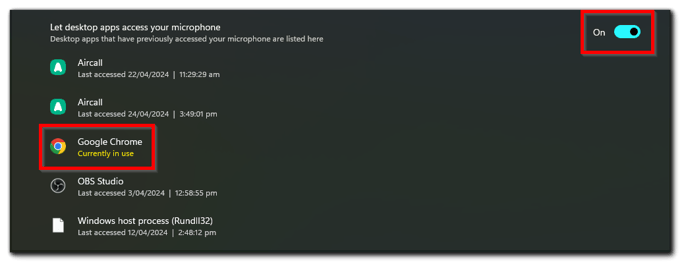
Windows: Camera privacy settings
Check your Windows Camera privacy settings to confirm that your web browser is given access to your camera. You can quickly access your Windows Camera privacy settings by typing the same in the Windows search bar.
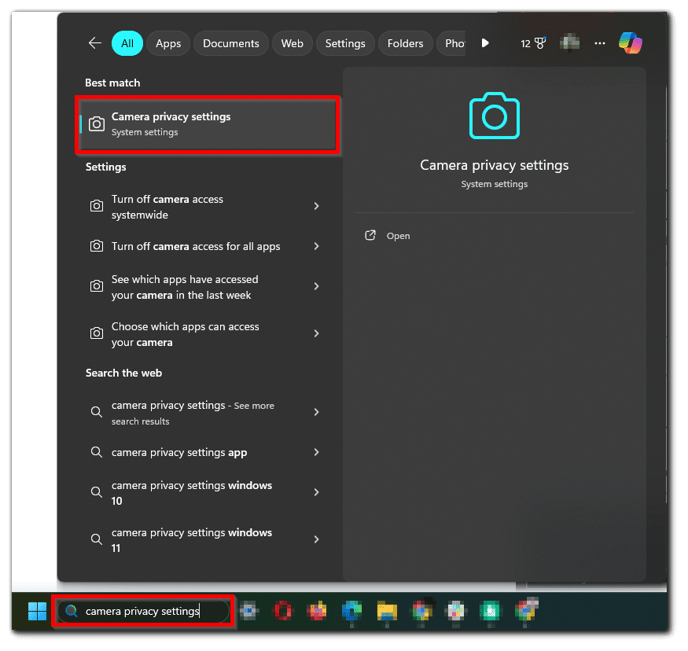
Once there, ensure the following is enabled:
- Camera access
- Let apps access your camera
- Let desktop apps access your camera (your web browser should be listed underneath)


Getting back to your Coviu video calls
Now that you have checked all the right places on your Windows device, your audio and video should work for Coviu video calls.
You can return to Coviu and enter a room or session to check the in-call Settings by clicking the Settings cog on the bottom left corner of the call interface. Ensure that your camera, microphone and speaker sources are selected correctly under Select camera, Select microphone and Select speaker, respectively.
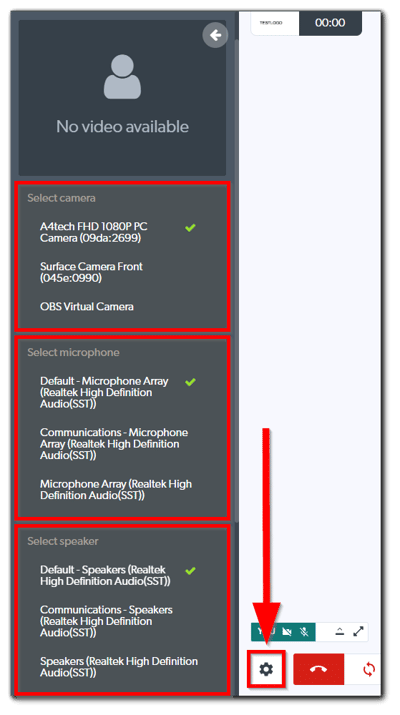
Note: If you see multiple sources or none have been assigned with a green tick by your web browser, please manually select a source for the camera, microphone and speakers.
More support options
You have completed another Coviu help article. You now know how to configure the audio and video on your Windows device to be Coviu-ready.
If this is not what you were looking for, explore our knowledge base and search for another article from here.
If you still require any assistance, please do not hesitate to get in touch with our friendly Customer Success team using any of the contact methods available here.
